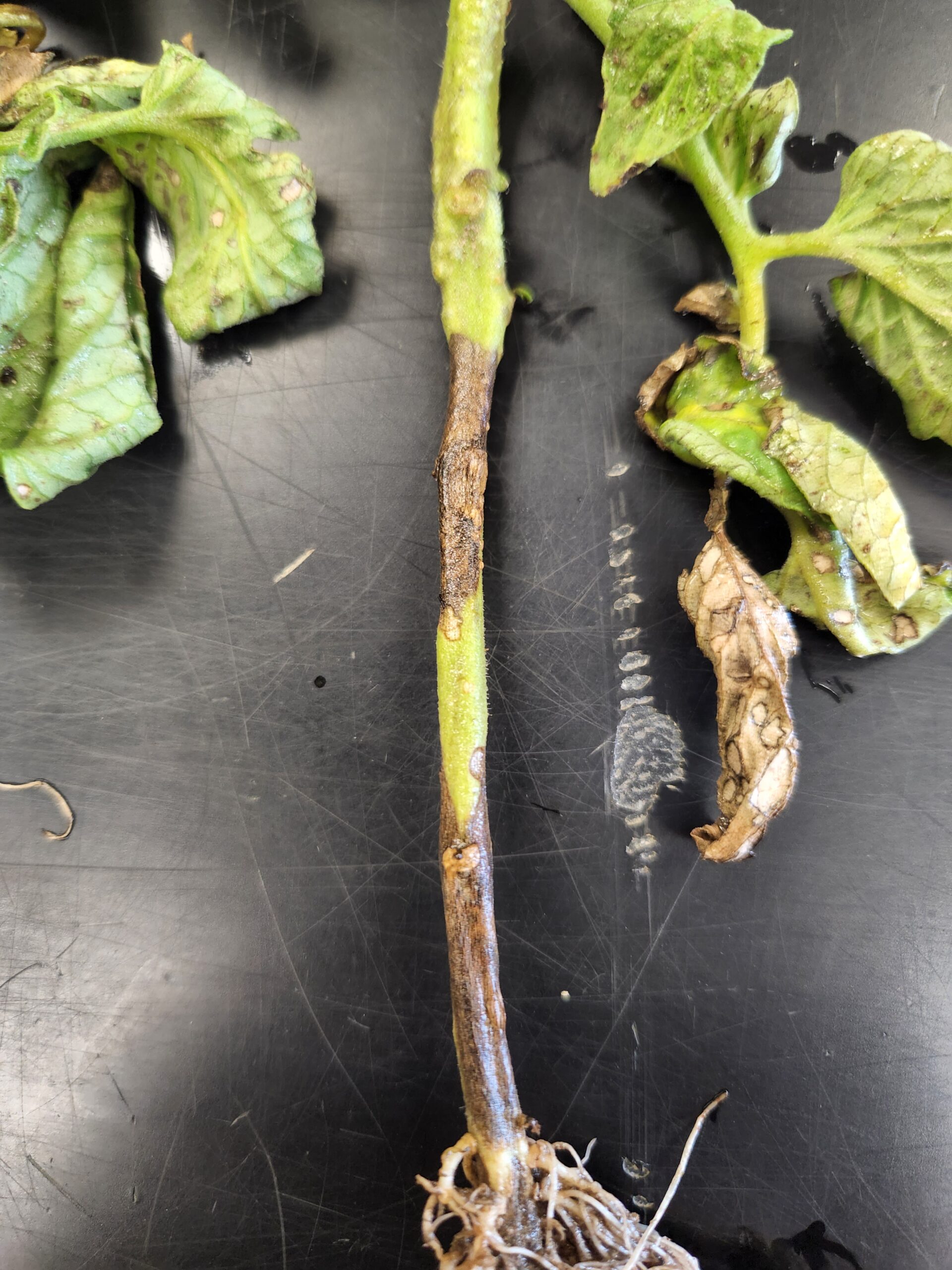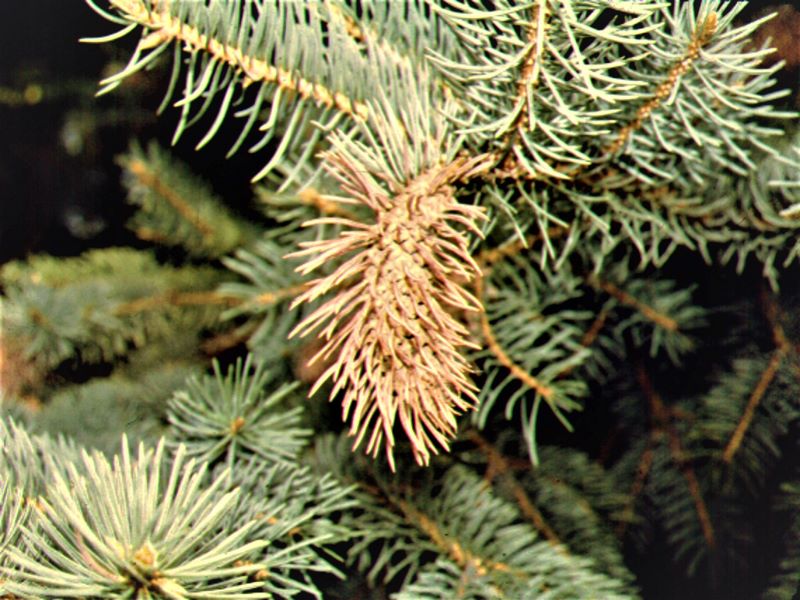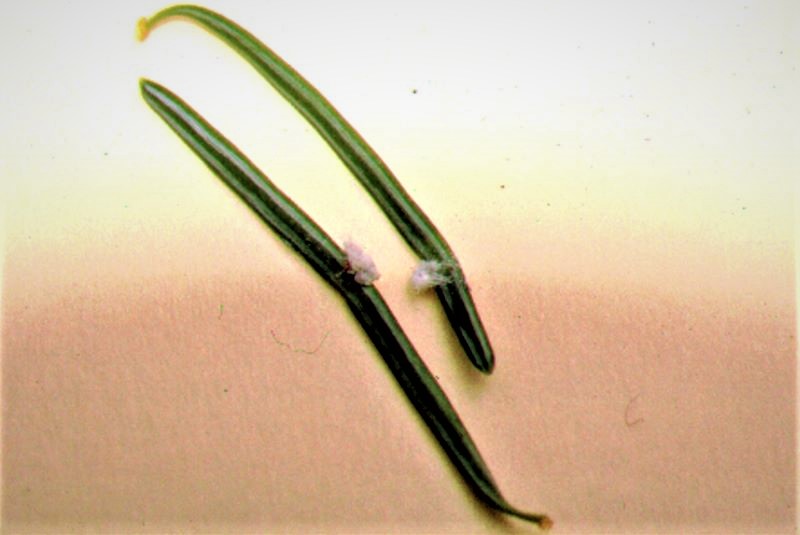Collar rot (Alternaria linariae) or Alternaria stem rot (Alternaria alternata f. sp. lycopersici) of tomato are common in young tomato plants. Either can be particularly troublesome in seedlings that have been held in transplant flats for an extended period of time before transplanting in hot, humid greenhouses. Collar rot infections often start where a leaflet branch has been broken or pruned which allows a point of infection. Symptoms of Alternaria stem rot include brown circular to irregular lesions on stems with definitive concentric black rings (very similar to Early blight on infected leaves). Symptoms of Collar rot are similar and may or may not produce concentric black rings. Infections that start in the greenhouse may lead to losses in the field as stems become girdled causing the plant or branches to wilt and die. Most commercial tomato varieties have resistance to Alternaria stem rot. While resistance is lacking to Collar rot, growers should chose varieties with Early blight resistance. Fungicides used to control Early blight are also effective against Collar rot.
Symptoms of Collar rot in young tomato |


